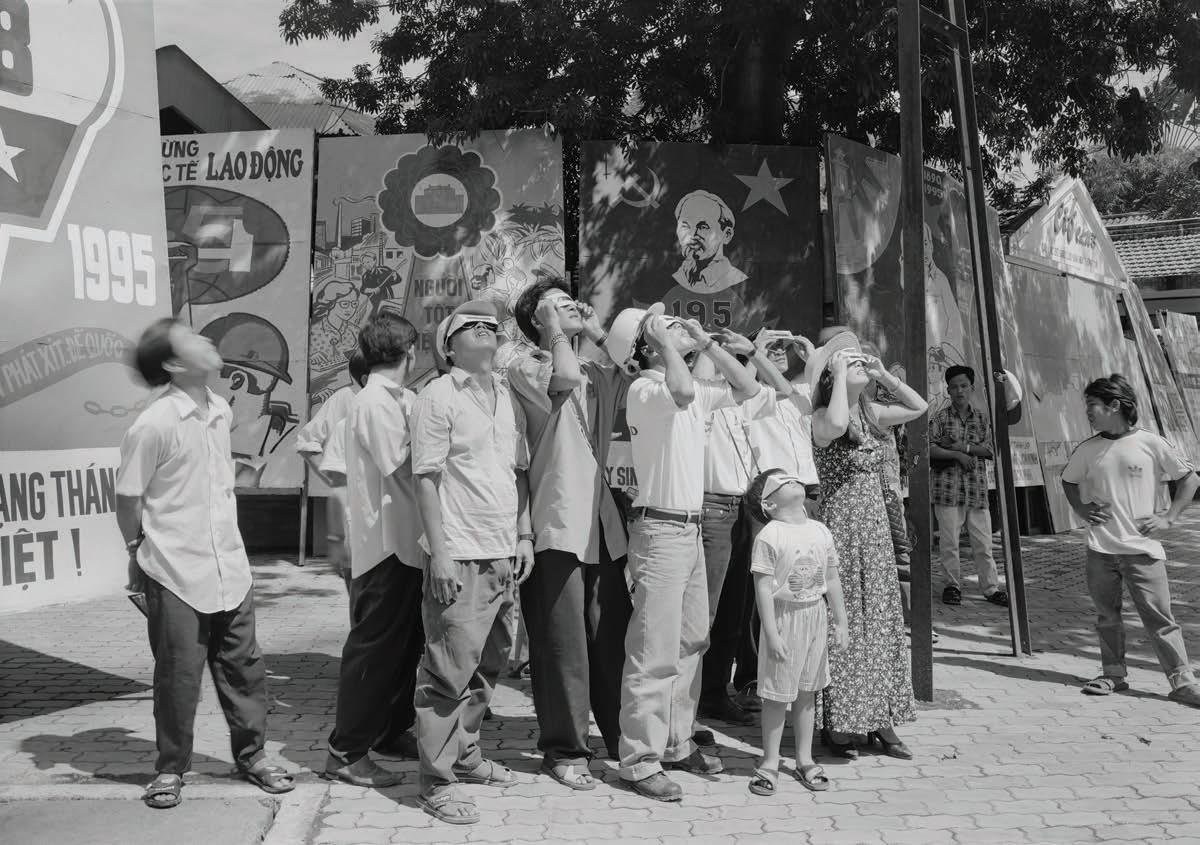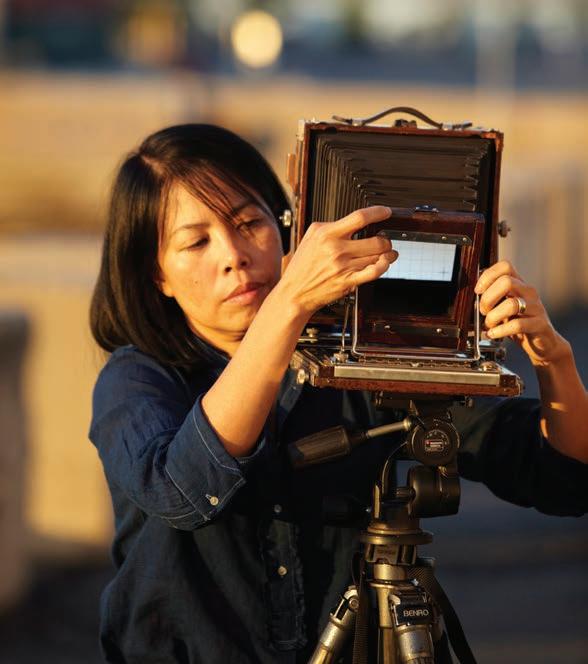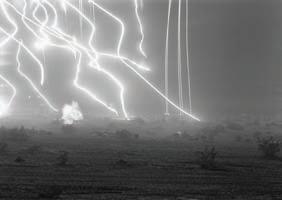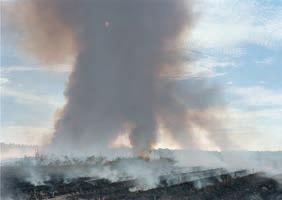
4 minute read
History and Memory in ‘An-My Lê: On Contested Terrain’
An-My Lê (American, b. Vietnam, 1960), Untitled, Ho Chi Minh City, from the series Viêt Nam, 1995. Gelatin silver print, 15 3/4 x 22 1/2 in., courtesy the artist and Marian Goodman Gallery © An-My Lê
BY DAVID LUHRSSEN
The news footage of Afghan allies fleeing Kabul recalled pictures of a similar exodus when South Vietnam fell in 1975. That earlier event was formative to An-My Lê, an adolescent who fled Vietnam with her family and grew up in the U.S. An overview of her work, “An-My Lê: On Contested Terrain,” is at the Milwaukee Art Museum through March 27. Originating from Pittsburgh’s Carnegie Museum of Art, “On Contested Terrain” consists of more than 100 photographs, many offering what Lê calls “a side-glance view” of war and its impact. Lê began making photographs in the 1990s during her first return visit to Vietnam. Like other photographs displayed in the first set of galleries, they are stark black and white images that leave more space for the imagination than full color. Lê uses a view camera sitting on a tripod, the technology used by photographers of the American Civil War. Her pictures of Vietnamese faces, landscapes and urban scenes are the antithesis of today’s digital photography. They aren’t snapped on the fly and meant to be scrolled superficially.

An-My Lê (American, b. Vietnam, 1960) Fragment I: Film Set (Free State of Jones), Battle of Corinth, Bush, Louisiana, from the series Silent General, 2015. Inkjet print, 40 x 56 1/2 in., Carnegie Museum of Art. Purchased with funds provided by the Henry L. Hillman Foundation, 2020.21.6 © An-My Lê
The layered, complicated images demand attention as they whisper questions about the human condition that they refuse to answer.
“On Contested Terrain” includes several series of photographs. One, “Small Wars,” was taken from 1999-2002 at Vietnam War reenactments in North Carolina and Virginia. Allowed access only if she participated, Lê is seen in one picture role-playing as a Vietcong sniper, waiting in the tall grass for the approaching platoon. War for the reenactors was theater and Lê documented performances that involved the personal and social anxiety of the players as much as the war’s fraught history.
The long exposure time from her stationary camera creates blurry motion suggesting memories—but whose memories? The texture woven by light and shadow is often painterly. Some scenes are hauntingly suggestive of those Civil War campaigns fought in deep forests by rebel guerrillas against U.S. troops. Lê’s work is replete with references to art history. In the “29 Palms” series, taken at a Marine Corps training center for deployment to Iraq and Afghanistan, several photographs show the work of humankind as puny against a looming range of mountains. They call to mind the 19th century photographer Timothy O’Sullivan, who found the sublime in his landscapes. By contrast, Lê suggests bleak prospects.
Lê turned to color in recent years, using a stationary camera but developing the negative digitally and printing them with an inkjet instead of the gelatin silver prints of her earlier work. According to the Milwaukee Art Museum’s photographer curator Lisa Sutcliffe, the change began with Lê’s series on the U.S. Navy, “Events Ashore.” The formidable size of the warships, the vastness of the oceans and the tonalities of sea and sky suggested the need for larger scale and full color.

An-My Lê with her large-format camera. © John D. and Catherine T. MacArthur Foundation - used with permission. An-My Lê (American, b. Vietnam, 1960) Night Operations VII, from the series 29 Palms, 20032004. Gelatin silver print, 26 1/2 x 38 in., Collection of the Museum of Contemporary Photography at Columbia College Chicago, Museum Purchase; 2005:37 © An-My Lê An-My Lê (American, b. Vietnam, 1960) Fragment I: Sugar Cane Field, November 5, Houma, Louisiana, from the series Silent General, 2016. Inkjet print, 40 x 56 1/2 in. Milwaukee Art Museum. Purchase, Herzfeld Foundation Acquisition Fund, M2019.111. Photo courtesy of Marian Goodman Gallery © An-My Lê


The exhibit’s final series, “Silent General,” begun in 2015, signifies polarization and the lingering presence of past events. Confederate statues are photographed on their pedestals in New Orleans and then in the warehouse where they were retired. Migrant workers in California bend over rows of asparagus like the peasants in Jean-François Millet’s 19th century painting, The Gleaners. The Texas-Mexico border is etched into the landscape by the Rio Grande whose winding course marks America’s mixed thoughts on immigration.
David Luhrssen is Managing Editor of the Shepherd Express and author of The Vietnam War on Film and other books on cultural history.











